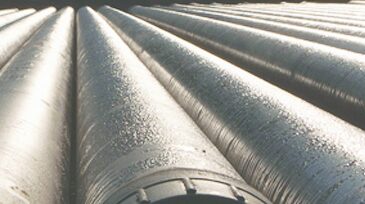corrosion
-
Sour gas is being produced from a number of carbon-steel-completed wells in the US, Canada, France, and Saudi Arabia.
-
This work introduces sodium gluconate as an efficient and environmentally friendly iron-chelating agent.
-
This feature takes a look at the work being done by companies to improve corrosion inhibitor fluids and inhibition techniques for offshore projects.
-
Microbial-influenced corrosion (MIC) has been implicated in few corrosion-related challenges in the well-service industry in the past.
-
With more wells to check than tools and time to do so, a methodology to predict wells with the highest risk of corrosion was developed.
-
When energy and healthcare collaborate, innovation is born. Pumps and Pipes, an unprecedented cross-industry collaboration between oil and gas exploration and production (E&P), cardiovascular medicine, aerospace, and academia, has grown into an international forum for transferable ideas and technolo
-
This paper reviews the mechanisms of initiation and the prevention of top-of-the-line corrosion (TLC). Recent research and developments are highlighted and validated to arrive at best practices for control of this significant corrosion manifestation.
-
The root cause analysis of corrosion failure in a heat exchanger revealed inadequate cleaning, ineffective microbial control, and subpar monitoring of cooling water quality.
-
Water condensation and/or hydrate formation at the top of pipelines are serious design/operation considerations in pipelines. This paper reports the results of tests conducted in a new experimental setup constructed for investigating gas-hydrate risks in varied operational scenarios.
-
The challenges for operators in the Eagle Ford have been enormous, which can push chemical management to the back burner. But there is a price to be paid down the road. Operators have recently become more mindful of implementing metric-driven chemical management programs.










